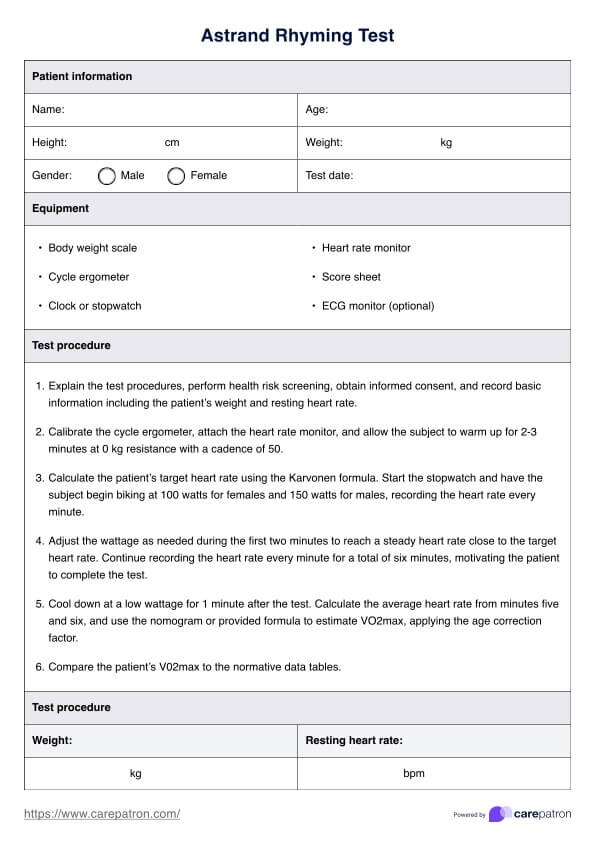It is a submaximal cycle ergometer test used to estimate aerobic fitness by measuring the heart rate response to a fixed workload over six minutes. It helps by predicting maximal oxygen intake based on submaximal performance.

Astrand Rhyming
Discover how to use the Astrand-Ryhming test to assess aerobic fitness with step-by-step instructions, benefits, and FAQs. Optimize patient care effectively!
Use Template
Astrand Rhyming Template
Commonly asked questions
The test is suitable for individuals looking to assess their cardiovascular fitness, including athletes training, patients in rehabilitation, and those beginning an exercise program.
VO2max is estimated using the patient's steady-state heart pulse rate during the test, workload, and age correction factor, often utilizing a nomogram or specific calculation formula.
EHR and practice management software
Get started for free
*No credit card required
Free
$0/usd
Unlimited clients
Telehealth
1GB of storage
Client portal text
Automated billing and online payments











